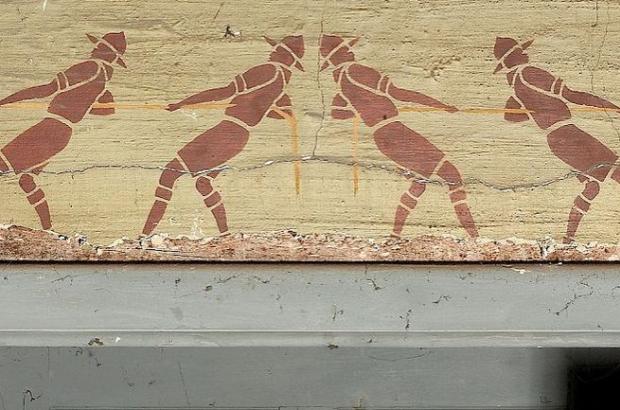- Daily & Weekly newsletters
- Buy & download The Bulletin
- Comment on our articles
Race to protect Hergé artwork in Brussels scout hall
A classification procedure has been launched to protect rare mural paintings produced by Hergé, the world-known inventor of Tintin, when he was 15 years old and a member of a scout troop.
In a small room, eight metres by three - a former garage on the grounds of the Institut Saint-Boniface in Ixelles - the walls are covered with original stencilled drawings: scouts on all fours or climbing rope, 35 galloping knights, American Indians and a large map of Belgium.
These mural paintings, brownish-green, in poor condition, are now the subject of a classification procedure launched by the Brussels Region.
But this doesn’t mean that protection is in the bag. The office of Pascal Smet, secretary of state in charge of heritage protection for the Brussels region, cautions that the objective of the procedure is "to analyse the pros and cons. The opening of the procedure is not synonymous with classification.”
The paintings were rediscovered in 2007 and since 2018 the Ixelles alderman for heritage protection, Yves Rouyet, has been sounding the alarm.
"These mural paintings are very damaged and are never shown to the general public," he said. "We plead for them to be restored and for the premises to be transformed into a small space telling the story of Hergé's life within the scout movement."
He added: "For lovers of Hergé, it is as if they were opening Tutankhamun's tomb. It is an extraordinary treasure. It is a missing link in understanding both the work of Hergé and the history of comics.
"It is with the scouts and in particular at Saint-Boniface that Hergé learned to tell stories. He first developed his talents for creating comic book while with the scouts.
"He decorated the scout locale and illustrated magazines. It is by illustrating magazines that he developed his graphic universe with extraordinary finesse, especially depicting movement as had not been seen before.”
However, In an analysis released in June 2020, the Royal Commission on Monuments and Sites (CRMS) issued its opinion. "While recognising the obvious quality of Hergé's work and the interest in preserving his early works, the CRMS questions the merits of the request for classification as presented, In addition, notes the commission, classification as a monument would not constitute "the best heritage recognition tool to put in place in order to guarantee the durability of these drawings/paintings".
The analysis of the procedure, confirmed by an order of the regional government on 11 February, is likely to take several months.


















